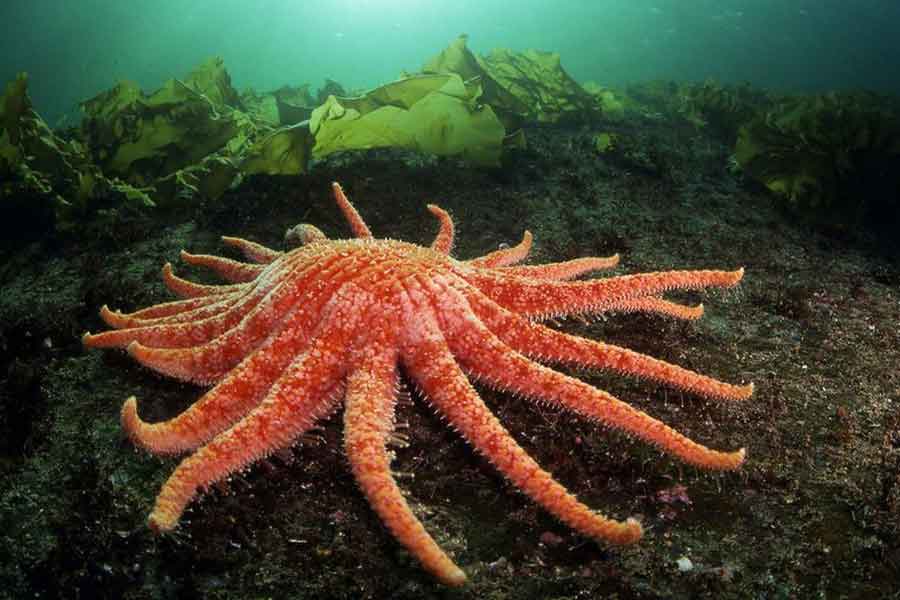
Although asterozoans (starfish) have proliferated in all the world’s seas for over 500 million years, their evolution remains a mystery. Their characteristic five-rayed shape is familiar on rocky or sandy shores, in icy seas, or in the islands of the Caribbean. They can vary in size from one millimeter to one meter. They usually have five arms, but some species can have more than ten, and there are even species with 50 arms. When they have multiple arms, they are often referred to as «sunstars.»
Starfish are solitary animals that move slowly along the seabed using their numerous and tiny tube feet, which are located on the underside of their bodies. Each tube foot has a suction cup with an adhesive force of 29 grams. These tube feet allow them to glide or crawl slowly, flip themselves over when necessary, or bury themselves in sediment. Each tube foot feeds independently from the others through a vesicle. If a starfish is attacked by a predator and loses one of its arms, it will regenerate it, although the regenerated arm will be shorter. The arm, if not consumed, remains alive but will die in approximately one month because it cannot move or capture prey. However, species of the genus Linckia, when they lose an arm, regenerate four new shorter arms, and these special individuals are known as «comets.»
When a starfish manages to position itself on top of its favorite prey, a bivalve, it envelops it with its body, and the suction cups of its tube feet adhere to the valves and begin to apply pressure to open them. During the past century, it was believed that the starfish hypnotized the mollusk or that it used acid to bore through the shell. However, the reality is more spectacular. The mussel, fatigued by the effort, relaxes the pressure and slightly opens its shell. Without wasting time, the starfish extends its stomach out of its body, applies the gastric sacs to the mussel’s flesh, and starts to absorb and digest it. The complete digestion process takes approximately 10 hours, during which time the starfish’s stomach remains outside its body. Afterwards, it will begin its slow pilgrimage along the seabed in search of a new victim.
«One cannot defend what one does not love, and one cannot love what one does not know.»

